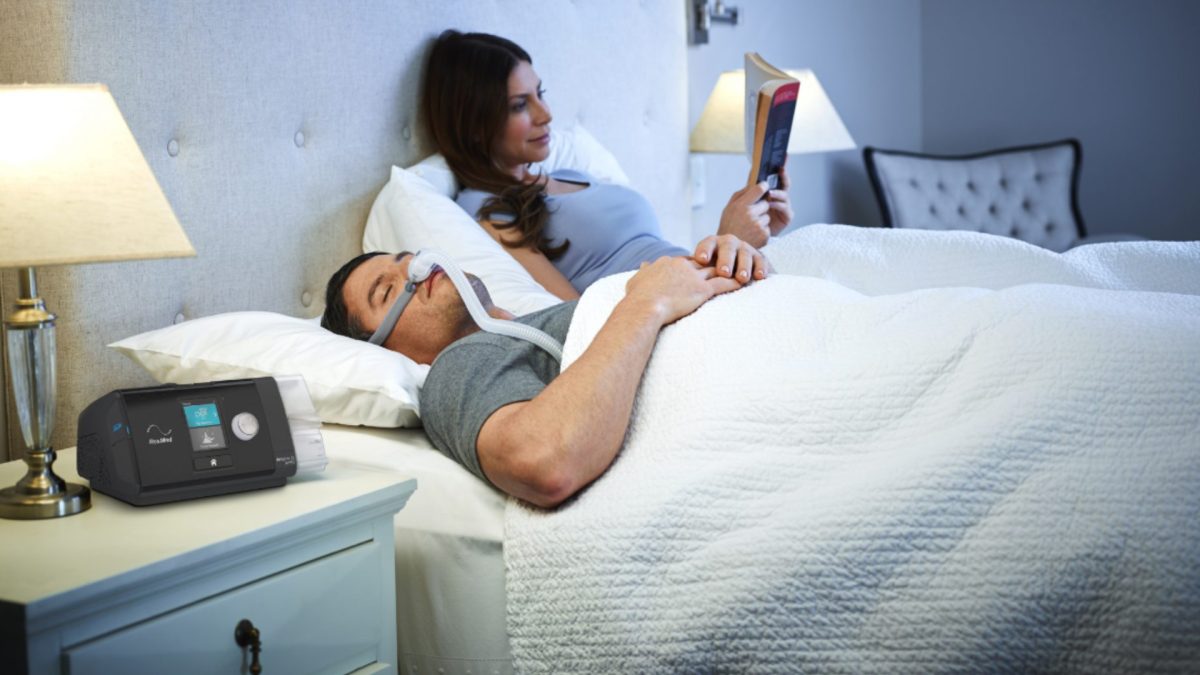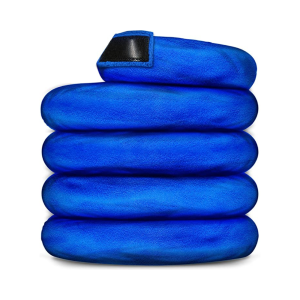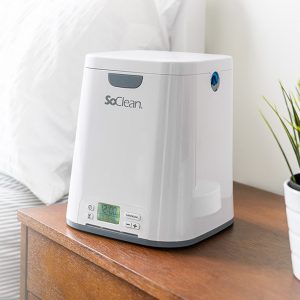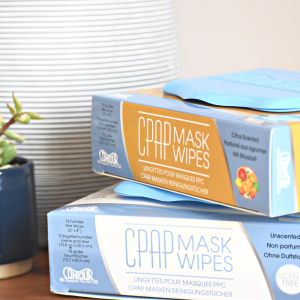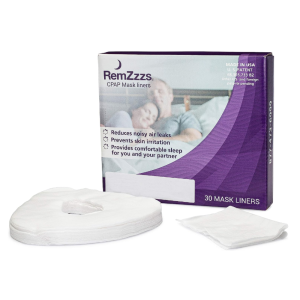Fact Checked
Intus Healthcare’s writers, customer service team, and sleep experts review and ensure this information is accurate.
Last updated on April 16th, 2024 at 09:22 am
Understanding Sleep Apnoea indicators and CPAP numbers
Your CPAP machine provides a continuous flow of pressurised air to keep your airway open and prevent breathing pauses. However, CPAP machines can sometimes be confusing to understand. Let’s take the confusion away by examining what your CPAP readings signify so you can get the most from your device. Your CPAP can provide different readings, including your AHI, usage hours and the CPAP mask leak rate.
What do events mean on a CPAP machine?
One of the key readings on your CPAP machine sleep report is your events per hour, which is your AHI: Apnoea-Hypopnea Index. The AHI is the number of times your airway either partially or fully closes every hour and determines the severity of your Sleep Apnoea – mild, moderate or severe. An apnoea or hypopnoea must last at least 10 seconds or longer to register as an event on your CPAP.
The number of events calculated is categorised into different index severities:
- Fewer than 5 instances: Normal range
- Between 5 and 15: Mild OSA
- Between 15 to 30: Moderate OSA
- Higher than 30: Severe OSA

How many events is normal?
An events per hour score below five is considered normal and indicates healthy breathing. Generally, the lower the number, the better. Your AHI may vary depending on disruptions. These disruptions could include mask leaks or turning and knocking your mask out of place throughout the night.
How do I improve my AHI number?
There are a few ways you can improve your AHI number, including:
- Changing your sleeping position
- Changing your CPAP mask to one that has a better fit.
- Replacing your mask parts if they are worn or old
- Regularly cleaning your equipment
What do the CPAP pressure numbers mean?
Your CPAP pressure number is the amount of pressure that the machine delivers to your airways.
Your healthcare provider may have provided a pressure setting. If your CPAP mask leak rate, AHI, and other readings indicate a problem and your device is uncomfortable, speak to your healthcare provider for guidance.
Alternatively, you can adjust the ramp time to help you settle to sleep easier. You do not need to change your pressure setting; your healthcare provider will advise if this is necessary, which is why this setting is in the clinicians’ access menu only.
Several variables can impact your pressure setting.
These may include:
- A deviated septum
- If your soft palate tends to collapse while sleeping
- Allergies or a cold
- Weight gain or weight loss
- Certain medications
What is the normal pressure number for CPAP?
Most machines are set between 4 and 20 cmH2O, with an average of 10 cmH2O. If you use a fixed-pressure device, this will be set to your prescribed setting.
What is a good CPAP leak rate?
A good CPAP mask leak rate is less than 24L/minute. If your CPAP leak rate number is higher than 24 litres per minute, it signifies a problem.
It is normal for your mask to allow air to escape. This is primarily from an exhalation port built directly into the mask to prevent you from inhaling unhealthy carbon dioxide levels during therapy.
If you notice that the “leak” icon is frequently activated in your CPAP machine readings, and you wake up with a dry mouth or nose, it could be due to mask air leaks from an improper fit.
Mask leaks may also occur if your mask is more than six months old and has become loose. If this is the case, it may be time to purchase a new mask or replacement mask parts.
Please note that regular cleaning of your CPAP equipment will also improve the lifespan of your equipment.
Other circumstances can cause the leak indicator to display on your CPAP readings.
These include:
- Your mask may be too big
- Frequently changing sleeping position in an unaccommodating mask
- Facial hair could cause a poor seal
- The style of your CPAP mask might not be appropriate for how you breathe
Leaks caused by your pillow
Leaks can also be caused when you frequently change your sleeping position or roll over suddenly.
If you suspect this is the case, purchasing a specifically designed CPAP pillow could be beneficial. The pillow has cutouts on the sides to accommodate the mask. These cutouts help prevent the mask from dislodging when rolling to sleep on your side.

What do usage hours mean on my CPAP?
Your CPAP usage hours indicate the number of hours of therapy you received throughout the night. The more time you spend asleep using your machine, the higher your usage hours will be.
What’s a good usage hour number for CPAP?
Your CPAP should be used all night long. Therefore, a good usage number would be the entire time you spend sleeping. However, for CPAP Therapy to be effective, it is important that you use the machine for a minimum of four hours per night, and whenever you are napping.
What does the ramp setting mean in CPAP?
Depending upon the style of your machine, the ramp feature may or may not be present on the display. Some units have a ramp setting that gradually increases the pressure, making it easier and more comfortable to fall asleep. The airflow slowly increases until it reaches your required pressure level. The duration of the ramp stage is measured in minutes between 0 to 45 minutes, which can be set in 5-minute increments. The default setting is 45 minutes, but it varies from machine to machine. In most cases, you will likely fall asleep well before the cycle completes.
What is a good humidity level for CPAP?
You may also find your humidity settings within your device menu if you use a humidifier. The average humidity level is three but can be adjusted depending on your comfort level, the time of year and room temperature. Keeping your machine on a bedside table and using distilled water can positively affect your humidity level.
What is my EPR CPAP number?
Most machines will have an EPR (Exhalation Pressure Relief) customisable comfort setting. EPR decreases the air pressure flow when you exhale to make breathing easier and help your therapy feel as natural as possible. The EPR setting ranges from level 1 to level 3; you can adjust this in your settings.
How do I access my CPAP data?
You can access your settings and view the data on your machine. The data will allow you to track the effectiveness of your therapy and identify potential issues.
Modern CPAP machines are designed to connect to apps on a smart device. For example, ResMed’s AirSense 10 and AirMini give you access to the ResMed myAir app.
When might my CPAP machine readings indicate a problem?
To manage any issues, it is advised to look at your sleep report to view your CPAP readings.
Certain situations can cause your figures to fluctuate, such as:
- If you are ill.
- If you are prone to sleeping on your back.
- If you have recently been prescribed muscle relaxants.
- If you consumed alcohol before bed.
Readings that suddenly spike within the high range (more than 30 instances each hour) for no apparent reason should be reported to a sleep specialist as soon as possible. This could indicate an issue with the machine or that the treatment needs to be modified. Of course, other indicators, such as a leak or pressure fluctuations, should also be monitored closely.
Putting it all together
Getting the most out of your CPAP machine will involve knowing how to interpret your CPAP machine readings.
If you have additional questions or should you suspect that there may be an issue with your machine, always make it a point to speak with your doctor as soon as possible.
Helpful posts:
How to be comfortable with your CPAP mask
9 Common CPAP machine side effects and how to fix them

